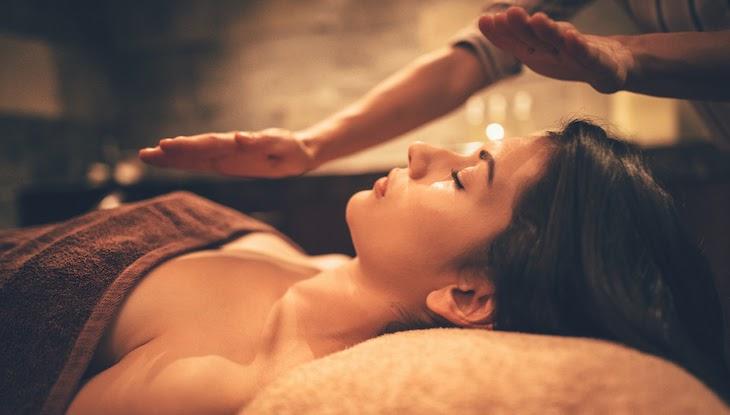
The Washington Post reported in 2014 that more than 60 hospitals in the United States offered Reiki services. Seven years later, in 2021, that number has likely increased by a huge margin. Much like with other spiritual wellness practices, such as yoga and meditation, people turn to Reiki to manage stress, anxiety, pain, and fatigue. In short, it’s a way of managing both mental and physical health.
While it can be hard to study energy healing practices, Reiki has loads of anecdotal evidence, not to mention some serious scientific research, that backs it up. As such, it’s probably worth understanding what the practice is all about. After all, you never know when a Reiki healing might turn out to be beneficial for you.
Reiki 101
Reiki is a type of energy healing that originated in Japan in the late 1800s. It exists within the realm of so-called alternative therapy practices, at least in the view of Westerners, and is not associated with any religious doctrine.
During a session, a Reiki practitioner transfers energy from their palms to the patient with the purpose of treating a health condition, either mental or physical, or an unwanted emotional state. The practice uses gentle touch on a clothed body and is non-manipulative and non-invasive. The practitioner slowly works their hands over the front and back of the body using various hand positions.
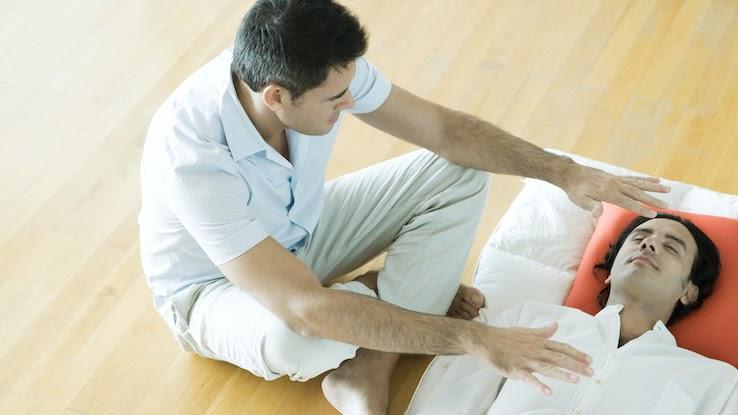
The word “Reiki” has two Japanese root words. “Rei” means “universal,” and “ki” means “life energy.” Reiki practice involves targeting the energy fields that surround the body. Practitioners note that energy can build up and stagnate inside of the body, particularly in regions of emotional or physical pain. If these energy blocks remain unresolved, they can lead to illness.
That’s where Reiki comes in. A practitioner is trained to work with those energy blocks so that the energy starts to flow around the body. In that way, it’s similar to the practices of acupressure or acupuncture. When the energy is unblocked, the idea is that healing speeds up; symptoms and pain decrease; and relaxation occurs.
The History of Reiki
Early practices of Reiki date back to the mid-1800s, though it was formally developed in the early 1900s. In 1914, a Japanese therapist, Matiji Kawakami, published the book Reiki Healing and Its Effects about a type of healing he named Reiki Ryoho — though it’s important to note that several other Reiki styles were also being used at the time. Then, in 1922, after a mystical experience, the Japanese Buddhist Mikao Usui began his own style of Reiki, Usui Reiki Ryoho, the style most commonly used today.
Usui was born in Japan in 1865 and grew up studying in a Buddhist monastery. As his education continued, Usui became interested in psychology, medicine, and theology, interests that led him to seek out non-traditional methods of healing, hence the eventual development of his own Reiki practice. During his lifetime, Usui taught around 2,000 people his Reiki method. After his death in 1926, Usui’s form of Reiki practice spread to Hawai’i and the U.S. in the 1940s, then to Europe in the 1980s.
Inside a Typical Reiki Session
Reiki can be conducted anywhere, though a peaceful setting is ideal. Patients either sit in a comfortable chair or lie on a table or couch. Some Reiki practitioners use music to create the most relaxing setting possible, though others do not.
Reiki practice begins with the practitioner gently placing their hands over certain areas of the body, including the head, limbs, and torso. They then form different hand shapes and motions. In total, Reiki practice can involve 20 specific areas of the body. A session typically lasts between 15 and 90 minutes, though it could be shorter or longer depending on the circumstances that brought the patient to the session.
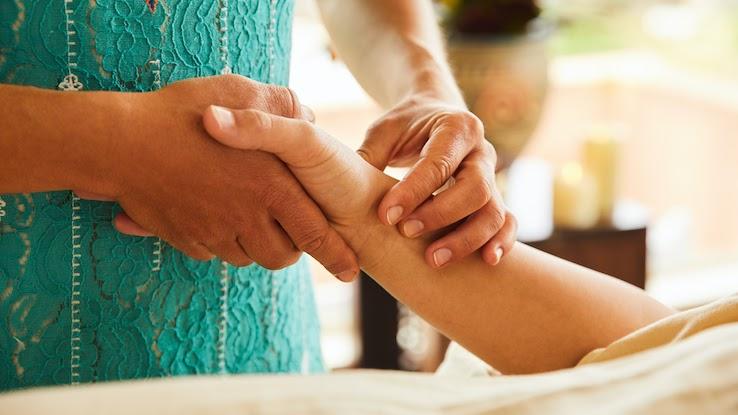
In the case of injury, instead of directly touching the body, the practitioner will hold their hands just over the wounded area. Additionally, they may perform Reiki over the buttocks if it is in pain, holding their hands near but never touching.
The practitioner holds their hands in each position until they sense their work in their area is complete, meaning they have moved the energy until it ceases to flow in that spot. The process is said to induce an energy transfer that prompts healing. Some Reiki patients feel the work is complete after one session, while others require several sessions, either to work on a single, larger issue — or to better target multiple issues.
Benefits of Reiki
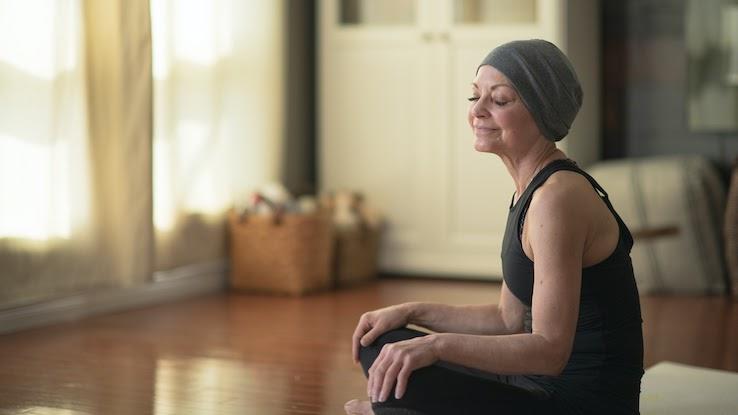
Reiki patients often say that their sessions induce intense relaxation. It is also said to help people cope with trauma and other difficult emotional situations; relieve stress; and improve general wellbeing. People also use Reiki to assist with many physical and mental illnesses, including anxiety, chronic pain, cancer, heart disease, neurodegenerative disorders, infertility, fatigue, and depression.
Scientific research does not directly back these claims, though anecdotal evidence and the fact that millions of people turn to Reiki to help them with health issues tell another story. Some medical experts often assert that healing from Reiki is the result of the placebo effect. In other words, simply believing that something is healing can manifest that healing. Others have said that Reiki practice is soothing, which can contribute to reducing anxiety and stress.
Evidence for Reiki’s Effectiveness
One study published in the Journal of Evidence-Based Complementary and Alternative Medicine found that Reiki is indeed more effective than placebo. The study analyzed 13 peer-reviewed studies from 1998 to 2016. Of them, four were randomized single-blind studies, and seven were randomized double-blind studies. The study concludes that Reiki has lots of potential as a complementary health therapy rather than a primary health therapy.

Another study, which looked into Reiki’s potential to help with depression and anxiety, was inconclusive — though it did find that the use of Reiki was not harmful. Additionally, the preliminary results from a 2019 study showed that Reiki could have positive effects on pain, anxiety, and quality of life in end-of-life care.
Despite a lack of hard evidence for Reiki’s effectiveness in dealing with physical and emotional health conditions, it has grown in popularity over the years. Today, many hospitals have incorporated it into their services, and many university wellness centers and workplaces also offer Reiki services.
How to Become a Reiki Practitioner
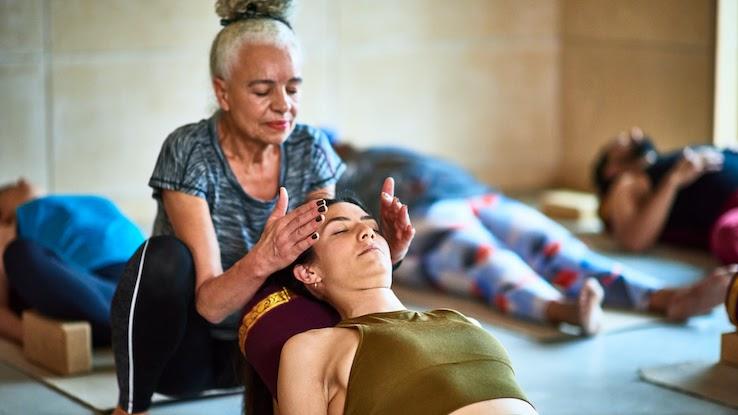
Reiki training has no prerequisites, though a genuine belief in the practice and a desire to learn is certainly beneficial. Reiki training involves learning about the energy around the body; techniques for how to work with that energy for healing; and ethics around the practice at large. Many students claim the training itself is spiritually powerful and transformative.
Reiki practice has three levels of mastery. Students can train for the first and second levels in days, though some courses extend for weeks or even months. However, to attain the Level 3 mastery of Reiki and become a Reiki master involves intensive training for several months.





